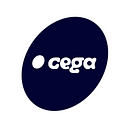Hello Sanics! We’re thrilled to introduce the Cega School series today. This three-part journey covers the basics of Cega while offering USDC rewards to participants for learning & engaging. Our goal with Cega School is to simplify the intricate concepts behind Cega’s product suite, transforming them into palatable bite-sized lessons for everyone. Today, we set our sights on structured investments and their rise in DeFi. So buckle up, it’s time to dive into the world of Cega.
Cega School: An Overview
What it is:
Cega School is an interactive three-part educational series. Released bi-weekly, each part features an informative article followed by a short quiz on the Galxe platform. By logging attendance in Galxe, participants unlock access to the subsequent part of the series.
The Perks:
Besides acquiring a wealth of financial knowledge, graduates of Cega School stand a chance to win $500 USDC shared among winners as well as an exclusive NFT to commemorate their successful completion of the program. Progress and completion of Cega School is facilitated through a Galxe campaign. More details can be found here.
The Timeline:
The journey with Cega School concludes on September 29th, 2023. We’ll distribute USDC rewards to winners on this day. You can progress through each topic at your own pace until then, with the flexibility afforded by our bi-weekly releases.
What are Structured Investments
In the realm of traditional finance, structured investments (or structured products) are widely utilized but remain largely inaccessible to the everyday investor unless they are a high or ultra-high net worth individual. Structured investments are designed and issued by major investment banks such as Goldman Sachs or Morgan Stanley and offered to a predominantly retail user base through brokers or other financial advisor intermediaries. At their most basic, structured investments are pre-packaged financial instruments that derive their value from one or more underlying assets, including equities, commodities, indices, interest rates and currencies.
To understand structured investments, envision assembling a custom gift basket. You are presented with various items such as chocolates, fruits, wines, cheeses, and books, each with its unique appeal and value. Selecting just one item doesn’t capture the full extent of your sentiment. You need a full gift basket to package multiple items together and deliver the charm. In a similar vein, structured investments amalgamate different investments, delivering a tool for investors that is designed to address specific risk-return objectives unachievable with traditional financial instruments alone.
Key Characteristics of Structured Investments:
Fixed Term
All structured investments have a set maturity date or term, varying from 1 month to 15–20 years. However, if the investment includes knock-out or callable features, the term might end earlier (we’ll cover these terms later in Cega School). The duration often aligns with the investor’s market perspective and their future income and liquidity requirements.
Formula-Based Returns
The returns of structured investments are based on predetermined formulas tied to the performance of the underlying assets. Provided the investment is held till maturity, investors will know from the outset how the performance of the underlying asset will influence their potential return or potential loss.
Potential for Outperformance
Structured investments can potentially generate returns that exceed a particular benchmark within a performance range. However, outperformance strategies carry a significant risk of loss of principal.
Credit Risk
All traditional finance investments into structured investments, including the payment at maturity, are subject to the issuer’s credit risk.
Liquidity
Issuers usually provide a marketplace where investors can sell their investment before it matures. However, doing so may lead to a loss or incur a penalty.
The growth trajectory of the structured investments market has been impressive. The US market, for instance, has doubled in size in just four years, selling more than $105 billion worth of structured investments in 2021 compared to its steady annual sales of approximately $50 billion. This influx of capital into structured investment markets has not fully permeated DeFi yet, but indications are strong that it’s on its way. Cega is leading the way in this innovation area by being the first protocol to launch on-chain structured investment vaults with the inaugural Fixed Coupon Note vault.
Why use Structured Investments
Structured investments offer a personalized approach to diversifying investment portfolios. Investors can select structured investments that fit their risk tolerance, financial objectives, and market outlook. For instance, a risk-averse investor might lean towards a structured investment that offers potential market gains while protecting the initial capital. In contrast, a risk-tolerant investor may choose a product tied to high-volatility assets for potentially higher returns.
Additionally, structured investments grant access to a wide array of asset classes, some of which might be unreachable for direct investment. Unique payoff structures have the potential to outperform traditional investment strategies, especially in volatile markets. For example, structured investments can serve as a tool for leverage, allowing investors to multiply their potential gains. By accepting additional risk, investors have the opportunity to amplify their returns, making structured investments a compelling option for those looking for high reward potential.
Structured Investments in DeFi
Though structured investments are still relatively new in the DeFi landscape, they are carving out their place swiftly. With the crypto market’s heightened volatility compared to traditional stock markets and wide array of crypto assets, structured investments have introduced new ways for investors to interact with digital assets.
Cega is at the forefront of this industry opportunity, providing users with the power of structured investments in a decentralized environment by packaging derivatives of cryptocurrencies such as BTC, ETH, SOL, ARB, and others.
In Cega’s vision, the best features of traditional finance merge seamlessly with the limitless potential of DeFi. Our platform’s structured investments are tailored to cater to specific market sentiments and risk profiles, whilst maximizing the yield opportunity present in DeFi markets. Whether an investor is seeking higher yields and exposure to a new market (L2 Vault) or desiring more significant capital protection with a broader market sentiment (Cruise Control), Cega offers the perfect fit for investors.
Confirming Your Attendance at Cega School
To complete this session of Cega School:
- Submit your Attendance: Complete the quiz in the Cega School Galxe Campaign to officially mark your attendance with an OAT reward.
That’s it! Your steps towards becoming a Cega School graduate are underway.
Next Steps
Good work on finishing this part of Cega School! You now have a solid understanding of structured investments and their place in finance. Next time, we’ll explore fixed-coupon notes and the types of options strategies Cega vaults utilize.
Join us on Discord and follow us on Twitter for the latest updates. Head to app.cega.fi to begin your journey with structured products. We look forward to seeing you at our next Cega School session!
Use of Cega’s Portal and Services is subject to the Cega Terms of Service. Access and use of the Cega Portal and Services is subject to a range of risks, including financial risk including potential loss of funds. The Cega Portal and Services are not offered to persons or entities who are U.S. Persons, Restricted Persons, or Sanctioned Persons (as defined in the Cega Terms of Service). Access and use by such persons is expressly prohibited.

